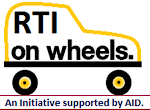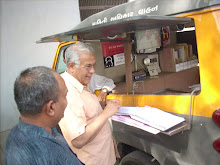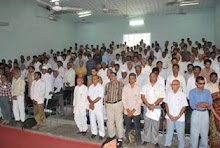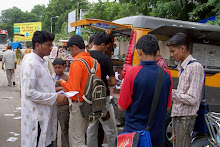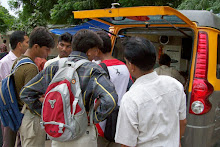The
Hindu: New Delhi: Sunday, 30 November 2014.
India’s right
to information law is among the most significant official measures to reform
governance and deepen democracy in the country since Independence. This radical
statute empowers citizens to seek answers from the government necessary to
evaluate the integrity and fairness of its decisions.
Nearly a
decade has passed since the passage of this law by India’s Parliament. A recent
study by the RTI Assessment and Advocacy Group and the Centre for Equity
Studies investigates how this act has been used, by whom and to what effect.
Its findings illuminate the health of both India’s democracy and governance.
In a country
with such vast reservoirs of desperate poverty and illiteracy, many feared
firstly that it would be redundant for the poor who need it most. The first
surprise of the report is that every one of the rural users and more than half
the urban users of the law, in its sample from five States, were poor people
(officially identified as BPL). Indeed nine out of 10 rural users were
officially identified as ‘Antyodaya’ or the poorest of the poor. This despite
reports of intimidation, threats and even physical violence when they submit their
RTI applications.
This confirms
once more that as with voter turnouts impoverished people have the greatest
stake and faith in Indian democracy, and the instruments it offers, ranging
from the vote to the right to information. But as the study also demonstrates,
the institutions responsible for implementing the Act let down India’s poor in
many ways. In most States, there is less than four per cent chance of securing
any information by filing a first appeal. Levels of pendency in second appeals
are so high that the authors of the report Anjali Bhardwaj, Amrita Johri and
Shekhar Singh calculate if current trends of disposal persist, it would take 80
years for a petition to be decided in Madhya Pradesh, and 17 years in West
Bengal! They find further that even when Commissioners decide, in less than
four per cent cases of default do they actually punish officials, therefore
reducing the deterrence of fines envisaged by the law into a paper tiger.
Many claim
that applications are burdening officials, but officials report in the study
that the average time they devote to RTI applications is two hours a week.
Another common criticism is that officials are harassed by vexatious
applications. Taking the widest definition of this term, the authors after studying
a sample of 1,000 applications, found not more than one per cent applications
could be so classified.
What
information then do people seek under this statute? Many applicants seek
information about norms that should anyway be public. For instance, one person
wants a list of old-age homes in Delhi, and the terms and conditions to get
admission. Others seek reasons for delays in official decisions, sometimes
years later. An applicant applied in 2013 to ask why he has not been given a
copy of a property sale deed he registered in 1997. The report lists two
examples in which anganwadi workers seek details about why they were rejected
for the position, and others who were less qualified chosen.
The authors
conclude that many such RTI applications are actually disguised applications
for redress of grievances, and sometimes open calls for help. In this they see
evidence of the ingenuity of the Indian public, who have perfected ways to use
RTI not only to register complaints but also on occasion to actually get them
acted upon, because this act is often more effective than all other available
remedies for inaction and delay. One applicant not only seeks information about
alcohol de-addiction centres to treat her alcoholic husband, but also ways in
which a BPL card-holder can avail these services free. Another old person wants
to know why his pension was stopped.
Occasionally,
even amid the despair, frustration and helplessness that characterise most
applications, they find instances of dark humour. In one, the applicant says
his village is not being developed, and wants to know what he should do to get
the work done, listing the options from which the officer must choose: dharna,
hunger-strike or self-immolation. In another, a widow alleges that a woman
officer who visited her asked for Rs.5,000 to release a grant to her for her
daughter’s marriage under an official scheme. She asks with make-believe innocence if this is actually a fee that she needs to
deposit to receive her grant!
-Harsh
Mander




